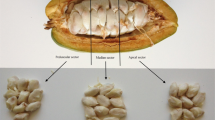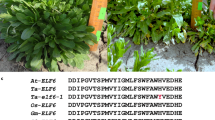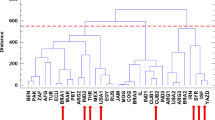Abstract
HITHERTO, work on the selection of the oil palm in Africa has been directed chiefly towards increasing the pericarp content of the fruit, the hereditary behaviour of the relevant factors being comparatively well known as a result of the work carried out by the INEAC in the Belgian Congo. It would appear, however, that the production in weight of bunches has as yet been little improved. In large-scale plantations, blocks planted with seed taken from natural palmeries have, under similar conditions, given bunch-weight yields comparable with those obtained from blocks planted with selected seed. This lack of improvement in production in weight of bunches manifests itself particularly in a very wide variation in the yields of individual palms of the present varieties; indeed, this constitutes one of the main causes of the relatively low yields obtained from such plantations. With the view of reducing this wide variability in individual production1, the possibility of eliminating mediocre producers in the nursery before field-planting has been investigated.
This is a preview of subscription content, access via your institution
Access options
Subscribe to this journal
Receive 51 print issues and online access
$199.00 per year
only $3.90 per issue
Buy this article
- Purchase on Springer Link
- Instant access to full article PDF
Prices may be subject to local taxes which are calculated during checkout
Similar content being viewed by others
Author information
Authors and Affiliations
Rights and permissions
About this article
Cite this article
DEVUYST, A. Selection of the Oil Palm (Elaeis guineensis) in Africa. Nature 172, 685–686 (1953). https://doi.org/10.1038/172685a0
Issue Date:
DOI: https://doi.org/10.1038/172685a0
This article is cited by
Comments
By submitting a comment you agree to abide by our Terms and Community Guidelines. If you find something abusive or that does not comply with our terms or guidelines please flag it as inappropriate.



